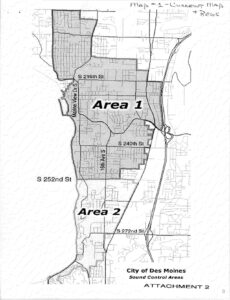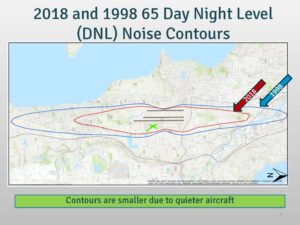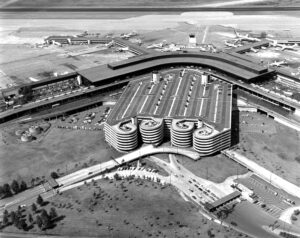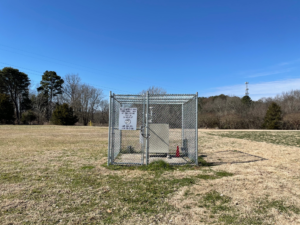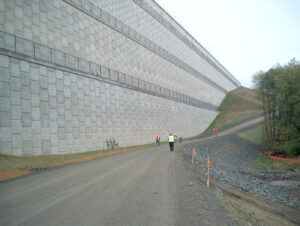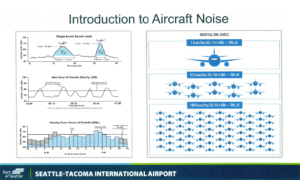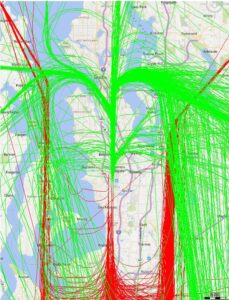At their April 26, 2012 meeting, the Des Moines City Council voted to remove any sound reduction requirements from its building code via (Ordinance #1539). This is exceptional given the fact that the two other cities in the area which had similar building code did not follow suit. At the time, the City Council would
Part 150 for Dummies
The Federal regulations concerning community noise around Sea-Tac Airport Part 150 (Airport Noise Compatibility Planning) is a section of the Code of Federal Regulations governing the FAA and airports. The code describes a ‘voluntary’ study airports can do to determine the impacts of noise on surrounding communities. A Part 150 Study has all sorts of
Parking
Parking is a huge part of Sea-Tac Airport, both in terms of revenue and operations. It also plays a significant role for the City of SeaTac as part of its Inter-Local Agreement with the Port of Seattle.
Beautiful Sunsets vs. Particulate Matter
What is a TRACON?
The area from 6-50 miles will affect you with or without a second airport. It’s an FAA acronym. Terminal Radar Approach Control. And if you live in any of the areas considered for a Second Airport, including Enumclaw or Pierce and Thurston Counties, keep reading. TRACONs are FAA facilities that house air traffic controllers who
Anatomy of an air quality monitoring network
This is a fixed site air quality monitoring (AQM) station. If your first reaction was, “So what?”, skip to the bottom, we’ll wait. You can view this as a stand-alone device, or you can view it as one node in a network of AQMs, which work together to allow for researchers to capture a much
The Great Wall Of Sea-Tac
In 1996, the Puget Sound Regional Council (PSRC) gave final approval to the Port of Seattle’s proposal to build a Third Runway. The airport was originally sited on a small plateau about 430 feet above sea level, which ended immediately at the west side of what is now Taxiway Tango. The basic struggle in airport
Calculating DNL65
We’ve often made the claim that DNL65 is not really a unit of measure. And when we say that it comes off as both condescending and patronizing. Okeedokee… If you want to understand DNL65, you should probably start by going to the regulations governing Airport Noise Compatibility and Planning aka Part 150. Got it? Great.
Financials
Below are the Certified Audited Financial Reports (CAFR) for the Port of Seattle over the past fifteen years. Before you embark on your light reading for the day, some generalities, including Why would I want to read a CAFR?. Port Finance 101 Structurally, the Port of Seattle is extremely complex. That’s not a question of
The Fourth Runway
We’ve begun using the term “Fourth Runway” to describe two large projects (SR-509 and the Sustainable Airport Master Plan) as one system, which they are. The two projects have always been part of a regional plan begun over fifty years ago to meet the strategic goals of the Port Of Seattle and regional planners. The construction of SR-509 will affect the communities are great deal. But starting in 2027 the projects will also increase flight operations at least 33% and cargo operations by 300%.
